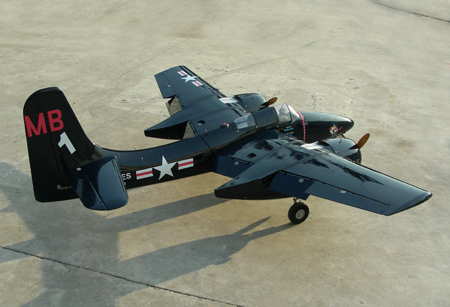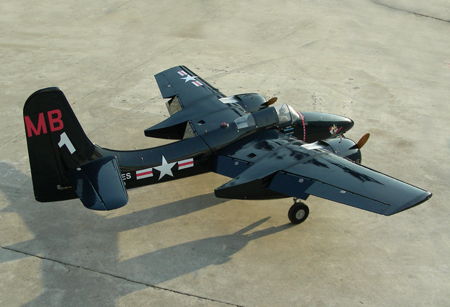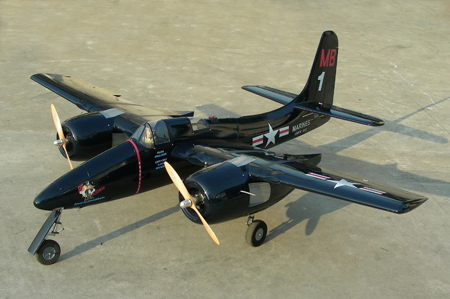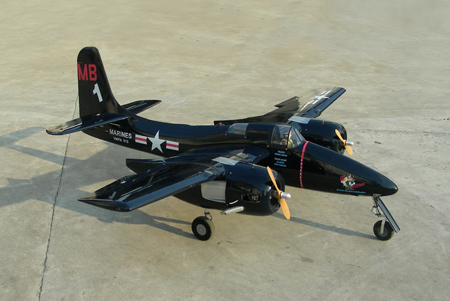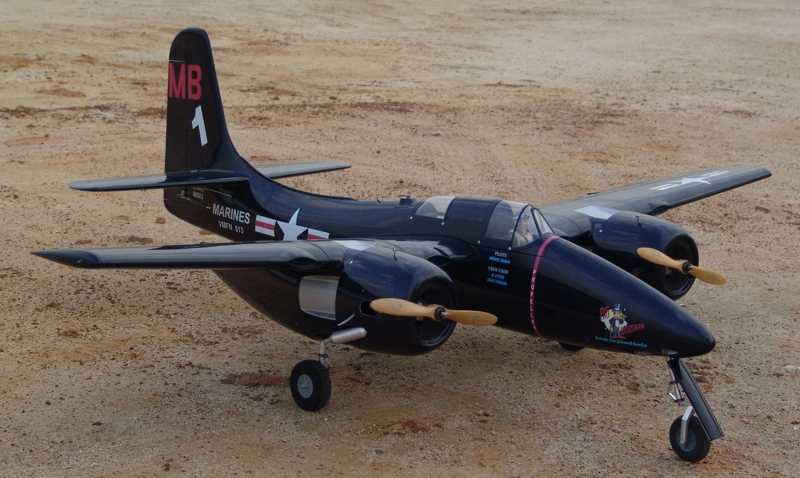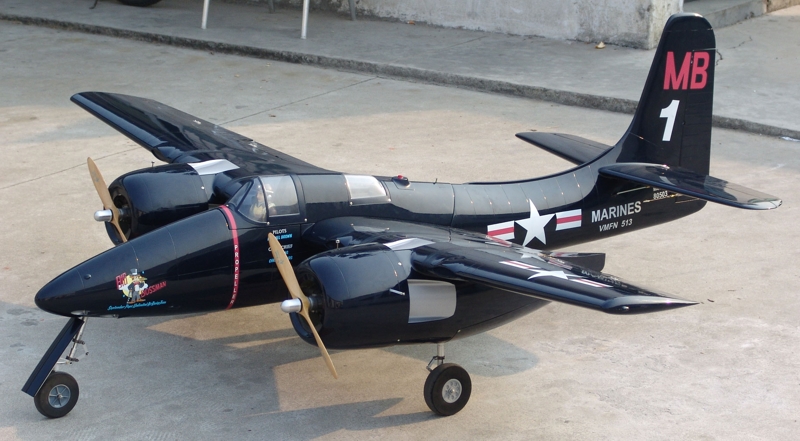Main menu
MODEL:F7F Tigercat(III)(ITEM NO: A006)
Length: 1840mm(72.4”)
Wing span: 2105mm(82.9”)
Wing area: 60.98sq.dm(6.56sq.ft)
Wing loading: 172.2g/sq.dm (56.5oz/sq.ft)
Flying weight: 10.5kg(23.2lbs)
Radio: 6ch & 13servos
Engine: 70 2-cycle(91 4-cycle)
Features:
Factory painted to scale, and pre-applied decals, covered with clear coat.
Functional flaps
All hardware included (screws, rods, fuel tanks etc...)
Epoxy resin fiberglass fuselage, built up wings, covered with solartex fabric and finished with a flat paint scheme, decals pre-applied and clear coated!
OPTIONAL:
Scale retracts - including alloy wheels, oleo struts and generation 5 retract system.
History: In early 1941, Grumman began design-work on a new twin-engined fighter for the War Department, for use on a planned larger Midway-class aircraft carrier. On June 30, 1941, Grumman was awarded a contract to build two prototypes, the first of which flew in December 1943. The XF7F-1 Tigercat was unusual for a fighter, with its shoulder-mounted wings, twin underwing-mounted engines, all-metal construction and tricycle landing gear.
Before the prototype even flew for the first time, Grumman was contracted to build 500 of them for the US Marine Corps, to be used as close-support aircraft for the massive landing operations then underway in the Pacific. Delivery began in April 1944. The first 34 F7F-1s were similar to the prototypes, then 30 two-seat night-fighter variants (called F7F-2Ns) were produced. Next, 189 single-seat models called F7F-3s were built which featured slightly more powerful R-2800 engines, slightly larger vertical stabilizers, and a 7% increase in fuel capacity.
Much of the original order for Tigercats was cancelled after VJ-Day, and they never saw operational service in WWII. Less than 100 Tigercats were built after the war as night-fighters (F7F-3N and F7F-4N), electronic reconnaissance (F7F-3E) and photo-reconnaissance (F7F-3P) platforms, but higher-performance jet-powered airplanes soon replaced the Tigercat in the US Marine Corps. During the 1960s and 1970s, a few were gradually sold as surplus and converted to fire bombers or aerial photography ships.
Nicknames: T-Cat
Specifications (F7F-3):
Engines: Two 2,100hp Pratt & Whitney R-2800-34W Double Wasp 18-cylinder radial piston engines
Weight: Empty 16,270 lbs., Max Takeoff 25,720 lbs.
Wing Span: 51ft. 6in.
Length: 45ft. 4.5in.
Height: 16ft. 7in.
Performance:
Maximum Speed at 22,200 ft: 435 mph
Cruising Speed at 5,000 ft: 222 mph
Initial Climb Rate: 4,500 feet per minute
Ceiling: 40,700 ft.
Range: 1,200 miles
Armament:
Four 20mm (0.79-inch) cannon in wing roots
Four 12.7mm (0.5-inch) machine guns in nose
One torpedo under fuselage
2,000 lbs. of bombs (1,000 lbs. under each wing)
Προιόντα στην Ιδια Κατηγορία
Ο λογαριασμός μου
Στοιχεία Επικοινωνίας
Τηλ: 210 5444 204 - Φαξ: 210 5444 384
e-mail: info@diamond-models.gr
Διεύθυνση: Κοραή 8 & Καποδιστρίου
Αιγάλεω 122 41 , Αθήνα
Ώρες Λειτουργίας: Δ-Τ-Τ-Π-Π απο 9:30-20:30 Σαβ.απο 9:30-15:00


